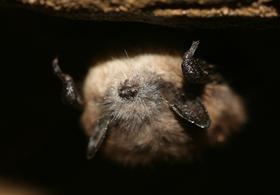
The little brown bat could be wiped out in the northeastern United States within the next decade by white-nose syndrome according to new projections.
The U.S. Fish and Wildlife Service says that since 2006, when white-nose syndrome was initially discovered, as many as 6.7 million bats have died from that disease.
Bats control pests on farms and in forests and serve as important pollinators.
Spokeswoman Ann Froschauer says some bat species are affected more than others, but typically the fungal disease is 80 to 85 percent fatal.
“The little brown bat in the northeast is right around 90 percent mortality right now,” Froschauer said. “So… that doesn’t leave a lot of bats to try to repopulate. So there continues to be problems for the remaining bats.”
Some caves in Pennsylvania that have been tracked are even worse. For instance, in Bucks County, the Durham caves had nearly 7,400 bats in 2004. In 2011, only 161 bats were counted — a stunning 98 percent loss over seven years. These were once home to one of the largest wild bat populations in the state.
Other tracked Pennsylvania caves aren’t any better. Three caves had bats in the single digits. One cave had no bats at all.
Froschauer says even with current efforts to repopulate bats, it could take centuries to bring them back to previous levels. Bats can only produce about one baby per year.




